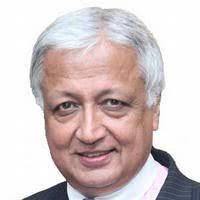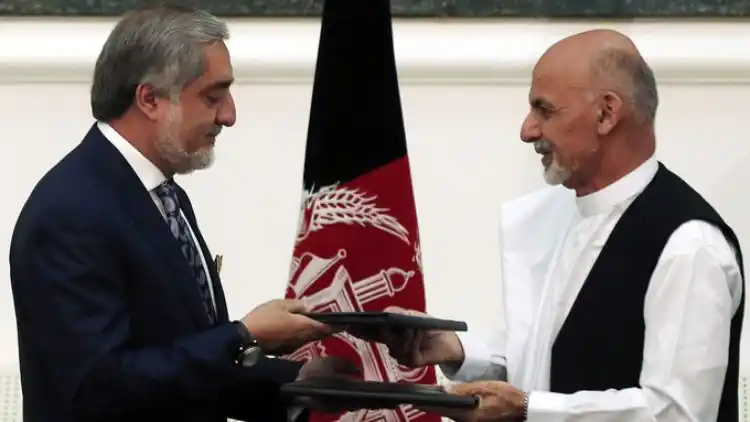 Deepak Vohra
Deepak Vohra
I have just returned from an Indian Defence Institution of Excellence where I met an Afghan military officer. I could see hope, anger, and despair in his eyes. His family is in Afghanistan
After several parallel Afghan peace processes ended in nothing, the Taliban has taken over the country.
After two decades, the United States is leaving Afghanistan. The UK is doing the same. India has brought back its nationals.
The UN Security Council discussed the issue of Afghanistan recently where many countries made grand statements. Afghanistan is an example of hope belied and trust betrayed.
In the early 1980s-1990s, several million impoverished Afghans had fled to Pakistan (mainly the frontier areas around Quetta) when the Soviets invaded in 1979 and the mujahideen warlords shattered the country’s social fabric after the Soviet departure, sent their male children to study in local madrasas and a whole generation grew up nourished on fundamentalist Islam.
Enraged by what they saw happening in their homeland, the mainly Pashtun Taliban (students), some with experience of fighting the Soviets and trained by the Pakistani army, emerged from their madrasas in 1994 and marched in to punish the rapacious warlords, promising peace and stability to a traumatized population.
They seized heavy weapons and aircraft from frightened warlords, punished them, and advanced rapidly capturing Kandahar which became their base. Since none of the Taliban had been to a flying school, Pakistani pilots flew the planes and Pakistani technicians maintained them.
The Taliban were first welcomed, because they stamped out corruption, curbed lawlessness and made the areas under their control (about 90% of the country) safe for commerce.
But they soon showed their true colours, ruling through terror rather than popular acceptance. History has a strange way of repeating itself. In August-September 1947, when the Maharaja of Kashmir did not opt for Pakistan, Mohammad Ali Jinnah sent in tribal lashkars from the FATA and NWFP (Wazir, Mahsud, Turi, Afridi, Mohmand, Malakand Yusufzais), fired by the spirit of jihad and seduced by Kashmir’s zan, zar, zameen.
After the Soviet withdrawal, in 1989 a fellow called Hamid Gul offered Afghanistan to Benazir Bhutto on a platter, by sending Pakistani troops to capture Jalalabad, make it the provisional capital of their favourite Mujahedeen Commander, and then slowly take over Afghanistan. The Soviet-trained and equipped Afghan army fought splendidly, and several Mujahedeen factions joined them to repel the invaders. The plan flopped as Pakistani soldiers’ bodies started reaching home. The battle proved that the Afghan army could fight without Soviet help, and greatly increased the confidence of government supporters. Hamid Gul was sacked (Less than ten years later, Pervez Musharraf offered Kashmir to his Prime Minister via Kargil, lost his job temporarily, and then sacked his boss!)
In September 1996, the Taliban seized Kabul and founded the Islamic Emirate of Afghanistan, castrating and murdering former President Muhammad Najibullah (who was sheltering in the UN Compound) and hanging his body from a lamp post. Only three “free” countries, Pakistan, Saudi Arabia, and UAE recognized the rabid Taliban regime.
Then 9/11 happened, the US invaded even though there was no Afghan among the 9/11 terrorists, no one rallied to the Taliban’s support, and America got into its longest war.
With the Taliban gone, a new constitution opened the way for elections, free press, and rights of women. The United States and other well-wishers (including India) spent billions of dollars to build a stable, strong, effectively governed Afghanistan.
The skyline of Kabul is redrawn with high-rise apartment buildings, and the streets are filled with cars; foreign aid helped create new jobs, and women began going to work and to school.
One-third of the 8 million kids in school were girls, literacy trebled in 20 years, life expectancy went up by 50%. After decades of civil war and repressive government, the capital became a rollicking international city. Twenty years into the American-led war, Kabul feels again like the capital of a poor and troubled country. Afghanistan’s future is being decided far from Kabul. The so-called peace talks in Doha have only produced more war (a dialogue of the deaf). Afghanistan’s past looms over its present.
Like Richard Nixon about Vietnam, Donald Trump was desperate to make a deal that would allow him to say that he had ended the war in Afghanistan. In 1971 Nixon promised to bring the boys home, swept the 1972 polls, and waited for a “decent interval” before letting South Vietnam be gobbled up in 1975. In February 2020, a tired America and a re-energized Taliban signed a stupid agreement in Doha leading to a “political settlement,” but the deal did little to find a peaceful resolution.
The deal is an American admission of a lost 20-year trillion-dollar war, a repeat of Vietnam without the face-saving device of a Geneva Conference. By conferring with a ruthless rebel group, the U.S. legitimized the Taliban at the expense of the government in Kabul that they had worked to create and support. The Taliban intensified its attacks, used Hitler’s blitzkrieg tactics, and got an unconditional allied withdrawal.
According to the UN, the Taliban earns USD 1.5 bn annually from the opium trade, and more from mineral exploitation, taxes, land sales, production of narcotics etc. And they buy their weapons on Amazon.com! China, Russia, the five Central Asian “stans”, and India – all want a stable, non-terror hosting Afghanistan. Tajikistan, Uzbekistan, Turkmenistan and Kyrgyzstan have suffered from the Taliban brand of Islam.
The Taliban do not trust Pakistan that dumped them after 9/11 without even saying “sorry, guys” because of US threats (of the we-will-bomb-you-into-the-stone age variety), although it soon kissed and made up. Feeling that their military had become an American mercenary, in December 2007 former Pakistani mujahedeen formed the Tehrik-i-Taliban in Pakistan (TTP) to capture state power through a terrorist campaign with support from Al-Qaeda and the Islamic State.
In Pakistan’s restive Balochistan and Khyber Pakhtunkhwa (the site of the ancient Indian kingdom of Gandhara), there are growing attacks on the military and Chinese workers, frightening “iron brother” China. As the British, Russians and Americans have learned, it is possible to conquer territory in Afghanistan temporarily and defeat Afghans in open battle, but it is virtually impossible to hold the region for long. Afghan heroes are those who resist foreign occupation and defend their honour, their religion, and their homeland.
The spoiler-in-chief is Pakistan (a Pakistani official in the 1950s had even proposed an Islamic union with Afghanistan). The Pushtun Taliban do not recognize the so-called 2,640 km Durand Line (decided in 1893 as a personal agreement between Mortimer Durand, Foreign Secretary of British India, and Amir Abdur Rahman Khan of Afghanistan) that divides Afghan Pashtuns from their Pakistani kin and denies Afghanistan access to the Arabian Sea through Balochistan. The deal expired in 1993, and when the Kabul Government sought to re-open negotiations, the Taliban went marching in!
Pakistan was the Taliban’s principal financial, military, and diplomatic patron but was unable to transform this support into legitimacy for the Durand Line. As the adage goes: You can rent an Afghan, you cannot buy an Afghan; no regime in Afghanistan can be a Pakistani puppet.
In 1989, following the Soviet withdrawal, the Pakistani army decided to seize Afghanistan for its “strategic depth” against India, make Jalalabad the provisional capital of its favourite Mujaheddin leader, and then slowly take over Afghanistan. It sent in its troops to stiffen its favourite, but other rebel factions united with the Afghan army to repel the interlopers. Thousands of Mujaheddin died, and when the bodies of Pakistani soldiers began to come back, the dream was shattered. Hamid Gul, father of the Jalalabad Plan was sacked.
In a March 1950 speech in Parliament, Jawaharlal Nehru has lamented India not being able to help Afghan King Zahir Shah’s request for support for self-determination in Pashtunistan. In the early 1980s, Khan Abdul Ghaffar Khan, the Frontier Gandhi, repeated his lament that by not supporting the demand for a Pashtun homeland, India had thrown them to the wolves (Pakistan’s Punjabi army).
India is committed to Afghanistan with several billion dollars gifted: New Delhi recently signed the US$300 million Shahtoot dam project to provide clean drinking water to Kabul.
India supports “an Afghan-led, Afghan-owned and Afghan-controlled process for enduring peace and reconciliation in Afghanistan.” The biggest risk to its neighbours in Taliban- Afghanistan is Islamic terrorism (we have not forgotten the hijacking of our plane to Kandahar in 1999).
In late 2020, the Pakistani intelligence head of terror group Islamic State's Khorasan unit (ISIL-K) was killed by special forces near Jalalabad. The agency claimed that of some 400 plus IS captives in their custody, the highest, 299, were from Pakistan, while 34 were from China (presumably Uighurs).
At the July 2021 Dushanbe meeting of the Shanghai Cooperation Organization Foreign Ministers, External Affairs Minister S Jaishankar said sincere peace negotiations was the only answer since seizure of power by violence and force would never be legitimate: “the world, region and the Afghan people all want…an independent, neutral, unified, peaceful, democratic and prosperous nation,” he said.
Today, for America, Afghanistan is no longer a major consideration while the Afghan regime considers the Taliban an existential threat. The Taliban will not share power with the Ghani government, and there will be no transitional government to write a new constitution and lay the groundwork for nationwide elections (the Taliban do not know what elections mean).
It was clear in the Doha meetings that the Taliban thought they would decide the future. One Afghan Government negotiator said. “The Government side thought they were there just to discuss the terms of surrender while the Taliban said, “We don’t need to talk to you. We can just take over.”
When the Doha July 2021 talks collapsed, the Taliban blamed the Ashraf Ghani Government and demanded President’s resignation. They wish to have a sympathizer in his place. Some of the Taliban leaders, Guantánamo graduates, still believe that they can shoot their way into power. Taliban 2 will be no different from their previous incarnation.
As in 1996, the Taliban will implement their version of an Islamic regime, which most Afghans have to put up with. It is the most radical, misogynist, and brutal of all Jihadi outfits.They are the ideological descendants of the rabid, religiously motivated rampaging Pakistani lashkars from the northwest who invaded Kashmir in October 1947. They will welcome all manner of Islamic radicals, who are said to be fighting alongside them along with Pakistan’s sons-in-law, the Jaish-e-Mohammed and the Lashkar-e-Taiba.
Will Pakistan realize that a Taliban-dominated neighbour will be a magnet for its terror groups? No, as Pakistan is best known for smashing its face to spite its nose.
Despite China establishing direct contact with them, their assurances that they will not host Uighur militants are meaningless. In 2001, as the Taliban fled the advancing Northern Alliance, China did not allow them to cross into Xinjiang.
(Deepak Vohra is a senior diplomat, special Advisor to Prime Minister on Lesotho, South Sudan and Guinea-Bissau and Special Advisor to Ladakh Autonomous Hill Development Councils, Leh and Kargil)

 Deepak Vohra
Deepak Vohra